|
Riferimenti storici e geografici Alhough Croatia developed under the impact of many different cultures - Greek, Roman, Celtic, Illyrian, Austrian, Hungarian, Byzantine, Islamic - it gave its own and unique imprint to the history of European civilization. Let us first give a very rough sketch of the main historical periods of the Croatia's past:
Croatia is a point of contact of very different cultures and civilizations. Across its territory or along its boundary
Aucune frontière en Europe n'est plus lourde d'histoire que celle qui sépare Rome de Byzance, l'Occident de l'Orient.
The origins
One of the confluents to Don river near the region of Azov is called Horvatos (see [Pascenko], p. 87). The Croatian name can be traced to different sites in Ukraine, also around Krakow in Poland, in Bohemia, and Austria, thus showing migrations of the Croatian tribes to their future homeland.
In the ``Bavarian geographon'' (written in 666-890) there is a description of various tribes in the north of Karpatian and and Sudetian mountains, where the Croats are also mentioned.
In the region of northern Steiermark, Austria, (between Judenburg and Leoben) there is a place called Kraubat. The name appears many times in various charters of the 11th and 12th centuries, and is written as Chrowat (= Croat).
In the region of Kärnten (old Karantia in the south of Austria) there
is a place called Kraut, also derived from the Middle Age name Chrowat, mantioned in many charters of the 11th and 12th centuries.
In Kärnten (Karantia) there existed a Croatian parish already in the 10th century. Old manuscripts call it pagus Crouuati, which is obviously derived from the Croatian name (= Croatian parish). The name appears even in Royal charters. According to investigations of Felicetti this parish of `pagus Crouuati' spread precisely along the Gosposvetsko polje, where the earliest Slavic Dukes of Karantia had a seat. It included also the region of today's Klagenfurt (Celovec), capital of Karantia, together with the famous Church of Gospa Sveta (Maria Saal, Maria in Solio, Maria ad Karanten), probably the oldest Christian church in the region.
White Croats
Even today the descendants of the White Croats live in Bohemia. The surname Charvat is still rather widespread there. For example a director of the National Theatre Opera in Praha in 1990's was Mr Premysl Charvat. Villages in Bohemia like Harvaci, Harvatska gorica reveal its early Croatian inhabitants.
According to the Prague Telephone Book 1999/2000 there are as many as 516 individuals having names of possible Croatian root:
CONCLUSION: Since the capital of Bohemia today (in 2000) has about 1,250,000 inhabitants, than assuming that each telephone subscriber has at least three closest relatives in the mean, we obtain that in a random set of 800 Prague citizens there will be at least one with Croatian name. Many thanks to my dear friend Mr. Vlatko Bilic for painstaking counting :)
In 995, when White Croatian troops led by Sobjeslav were defending their Dukedom from pagan tribes, White Croatia was suddenly attacked by the Czech duke Premysl, destroying their capital Libice and killing most of the Croatian population. There are some conjectures that several noble families in Poland (like Paluk's) are descendants of White Croats, as well as the family of Rozomberk (which seems to be related to the town of Ruzomberok in Slovakia). Sobjeslav was killed in 1004 on a bridge over Vltava river in Prague, when Polish troops tried to occupy the city.
The name of the Croats is met in many places throughout Ukrainian soil. It is contained in Ukrainian written documents since the 2nd century until the end of the 10th century. The famous Ukrainian chronicler Nestor from Kiev (in his ``Povest vremennyh let'', 1113) mentioned also the White Croats inhabiting early-medieval Old-Ukrainian empire, known as the Kiev Rus'. According to a very old legend, one of the three brothers who founded the Ukrainian capital Kiev was Horiv, whose name might be at least hypothetically related to the Croatian name: Horvat. See [Hrvatska/Ukrajina], p. 9, and [Pascenko], p. 105. Even today some of the Ukrainian citizens say for themselves to be the White Croats. There are many proofs that the Croats once lived in common with Ukrainian and Slovak people: their language (very widespread ikavian dialects in Croatia and Slovakia, ikavian language in Ukraine), legends, customs, many common toponyms etc.
The region of historical Pagania around the Neretva river has many common toponyms and hydronyms with Western Ukraine, like Neretva, Mosor, Ostrozac, Gat. Also Sinj, Kosinj, Kostrena, Knin, Roc, Modrus, and many other throughout Croatia and Western Bosnia. Too many to be just an incidence.
There are numerous names of villages, hills and rivers in Slovakia, Czechia (especially in Moravia), Poland and Ukraine, which have their
obvious equivalents in Croatia and Bosnia - Herzegovina. Many of them are indeed surprising:
The once prosperous and rich Ukrainian village of Horvatka near Kiev (note well: Horvat = Croat) disappeared overnight in 1937, together with all of its inhabitants, during Stalin's infamous collectivization, sharing the tragic destiny of millions of Ukrainians. The only witness is an innocent brook, called Horvatka even today. See "Marulic", 1998/2, p. 263, and also [Pascenko], p. 293. In the 1990s in Kiev, Ukraine, a youth organization of scouts was founded, and named - White Croat (Bili Horvat; reported by Croatian ambassador Gjuro Vidmarovic in 2000)!
In the north of Croatia there is a very small village called Velika Horvatska (Great Croatia!), and a small brook bearing the same name. It reminds us about existence of White Croatia. We find it pertinent to mention that we know of several cases during former Yugoslavia in which young Croatian soldiers were not allowed by Serbian officers to declare that they were born in the village called Velika Horvatska, but were pressed to declare a nearby village Zbilj.
Old Norwegian - Viking travel writers Sigurd, Ohtere, and Wulfstan from the 8th century mention the Kingdom of Krowataland on the territory of today's Ukraine. It has been investigated by a Czech historian and writer Karel Krocha.
The Byzantine Emperor Heraclius (610-641) asked the Croats from White Croatia for help in protecting his Empire from the penetration of the Avars. As written by Byzantine Emperor Constantin Porphyrogenetus from the middle of the 10th century, a part of the White Croats, led by
two sisters Buga and Tuga,
moved to the territories of present-day Croatia. This happened in the
7th century. There they came in touch with the Romans and romanized descendants of Illyrians, Celts and others.
Soon after their arrival in the 7th century they were baptised and so
accepted Christianity. The Croats were the first among the Slavs who converted to Christianity.
According to Byzantine ruler Constantin Porphyrogenetus, the Croats made an agreement with the Pope Agaton as early as in 679, in which they obliged themselves not to undertake any offensive wars against neighbouring Christian states. This was the first international diplomatic agreement of the Croats with the Holy See. The importance of this event has been pointed out by the Pope John Paul II in his speech held in the Croatian language during his apostolic visit to Croatia in Zagreb in September 1994. The Pope also stressed the importance of more than 13 centuries of Christianity among the Croats.
Pope John Paul II had his second apostolic visit to Croatia in 1998, on the occasion of
beatification of Cardinal Alojzije Stepinac.
The Roman Empire was divided in 395. Later the Croats entered the Western Roman Empire. The historical border between the Eastern and Western Roman Empire was the river Drina. It flows between present Serbia and Bosnia, and in the past it divided in political and cultural sense, two very different civilizations, which had been separated until the penetration of the Turks in the 16th century. Later in 1054 this division also defined the border of the two Churches, one under Byzantium (Constantinople) and the other under Rome. Let us mention that Montenegro and Albania belonged to the Western Church. In 1184 the Serbian Orthodox Church penetrated by military expansion to Montenegro. Until that time the territory of Montenegro was a part of Red Croatia. Serbia, and later Montenegro, developed on the heritage of the Eastern Roman Empire (or Byzantine Empire).
According to Bulgarian scientist Gantscho Tsenoff (1875-1952), professor at the university of Berlin, the founder of Bulgarian state in the first half of the 7th century was KROVAT (or KURVAT). Tsenoff points out that this reveals very early and interesting connections between Bulgarians and Croats. The third son of Krovat was Asparuh, a well known name in Bulgarian history. See Ganco Cenov: "Krovatova B'lgaria i pokr'stvaneto na B'lgarite", Plovdiv 1998, in particular pages 59 and 183 (the first 1937 edition was forbidden during the communist period).
The earliest Croatian dukes and kings
Besides the name of Trpimir also the names of some other Croatian dukes can be seen in Cedad Gospels: Branimir, Braslav, their wifes, and escort.
In 871 the King of Italy Ludovic II and Byzantine Emperor Basil I defeated the Arabs in the city of Bari (Italy). Croatian soldiers also participated in the battle, arriving to Bari on Dubrovnik ships.
Some of the earliest Benedictine monastaries in Croatia were founded in
The Arabs began to attack the Croatian coast in the 9th century. So a
Croat from Dalmatia, known under the Islamic name Djawhar ben Abd Allah (911-992), was taken as a slave to the court of caliph Al-Khaim in Tunisia. Later he made a great career becoming the supreme general. He conquered the land of pharaos, thus extending the Empire of Fatimids from the shores of the Atlantic to the river Nile. He founded the new Egyptian capital Al-Qahira (Cairo), the future second largest Islamic city after Baghdad. In 970 he built up the mosque named Al-Azhar (the Brightest).
A very old mention of the name of HORITS, the ancient name of the Croats (Horvat), can be found in the Latin work ``Historia adversus'' Pagano by Paulus Orosius (9th century). Its translation into Old English has been made by King Alfred (871-901). See [Mardesic], p. 130.
In this grave rests famous Jelena, wife of King
Michael (Kresimir), mother of King Stephen (Drzislav).
She brought peace to the Kingdom. On the eighth day of October 976
from the incarnation of Our Lord she was buried here in the 4th
indiction, 5th lunar cycle, 17th epacta, 5th solar cycle. While she
lived she was mother of the kingom and she became mother of the poor
and protectress of widows. You who look here say: God have mercy
upon her soul.
During the shameful aggression of Venetians and Crusaders in 1202, the Christian city of Zadar, a dangerous rival of Venice at the time, was robbed and terribly destroyed. Geffroy de Villehardouin, a French
chronicler who described the siege and destruction of Zadar for the good of Venice during the Crusade, wrote that Zadar in Sclavonia (a synonym of Croatia at that time) is one of the best fortified cities, surrounded with strong walls, and that it is difficult to find a more beautiful, better fortified and richer city.
Zadar was an important European cultural center at that time due to its Benedictine monastery of St Krsevan (founded in 986, shelled by the Serbs in 1991), in whose scriptorium the famous Vekenega Evangelistary was written. This richly illuminated Latin text from the 11th century is held today in the Bodlean Library in Oxford (which also possesses other important Croatian documents written in the Latin, Glagolitic and Croatian Cyrillic Script). Even older is the the Cika Breviary from the 11th century, written in the Latin script in the same scriptorium in Zadar. This jewel of Croatian culture represents the oldest known breviary in Europe, and is held in the Library of the Hungarian Academy of Sciences in Budapest. Zadar is also the oldest university center of Croatia (1396). For additional information about Croatian art in Zadar see here.
It is interesting that King Richard the Lion-Hearted (1157-1199) sojourned in Zadar (and not in Dubrovnik as it has been believed). Also Henry of Lancaster, the future King Henry IV, visited Zadar and Dubrovnik during his pilgrimage to the Holy Land in 1392 and 1393. See [Mardesic], p. 134-135.
In the 12th century the famous Arabian geographer al-Edrisi was working at the court of the the Norman King Roger II in Palermo. After 15 years of study he prepared a huge map of Europe (3.4x1.5 m) where one can find
where bilad = land, country, and garuasia = Croatia. The map appeared
in 1154, when many contemporary countries still do not exist in Europe. Especially important is a description of GARUASIA in the accompaning book of commentaries, where he states that Croatia starts with Istrian cities of Umag, Novigrad, Porec, Rovinj, Pula, Medulin, Labin, Plomin. Then al-Edrisi describes the cities from Bakar to Dubrovnik. It is known that he visited Senj, Knin, Biograd and some other Croatian cities. The original map is kept in the Bodleian Library in Oxford, while partial copies can be found in Paris, St Petersburg, Constantinople and Kairo.
Very important historical source for early Croatian
history is Libellus Gothorum, a chronicle from 12th century known in Croatia as Ljetopis popa Dukljanina and Croatian Chronicle. It was written by Archbishop Grgur of Bar (a city in Boka kotorska, a region annexed to Montenegro in 1945), born in Zadar. The chronicle represents the oldest historiographic work of Croatian Middle Ages. There exist two versions, Croatian and Latin. Especially important is Grgur's presentation of assembly (SABOR) on the Duvno field ("in planicie Dalme"), and above all his terms for Croatian territories:
The source Sclavorum Regnum, known as Ljetopis popa Dukljanina and Croatian Chronicle, is also the earliest known literal text written in Croatian language. Marko Marulic translated this chronicle from Croatian into Latin in 1510, and the manuscript is held in Belgrade. The title is
Another version is written in Croatian, and in Latin script, due to Jerolim Kaletic from 1546, held in the Vatican. It is a copy of Dmine
Papalic's copy of Croatian Chronicle. There are clear indications that the original was written in the Glagolitic script (the opinion goes back to Franjo Racki, and is further supported by Muhamed Hadzijahic from Sarajevo and by Ivan Muzic from Split). For more details see a monograph [Hrvatska
kronika 547.-1089.] and the references therein.
Toma Arcidiakon (Thomas arhidiaconus Spalatensis, 1200-1268), an important chronicler from the city of Split, wrote in his Historia Salonitana that (a part of) Croatian tribes arrived to their present day homeland not as pagans, but as Aryan Christians (though very rude):
That is why in Croatian history we do not know of any single and precise date of christianisation, as in the case of other European nations, like Ukrainians, Czechs, Bulgarians etc. It seems that we can speak only about conversion of parts of newly arrived Croatian Aryan Christians to Catholicism in their new homeland. Indeed, Toma Arcidiakon writes the following:
Henry S. Hart in his book "Venetian Adventurer Marco Polo" (Oklahoma, 1967) states that Marco Polo was a "descendant of an old Dalmatian family which had come from Sibenik, Dalmatia, and settled in Venice in the 11th century". Hart also claims that "crews of the Venetian ships were freemen, so many of them Slavonians (Croatians) from the Dalmatian coast that the long quay by St. Mark's was and is known as the Riva degli Schiavoni (or Riva od Hrvatov in Croatian sources). It is said that Marco Polo had a home on the island of Korcula in Dalmatia. His coat of Arms includes four chickens. And in Italian, Polo (pollo) means chicken or fowl, while in Croatian Pilich means chicks or chickens, which was probably his original name. See [Eterovich], p. 13. Eterovich cites about 20 references (mostly Italian, and also English and German, the oldest one being from 1522), claiming the Dalmatian roots of Marco Polo, either from the city of Sibenik or from Korcula, at that time under Venice. See also Marko
Polo = Marko Pilich? on this web-site.
Venice was very important place for publishing books of numerous Croatian writers, philosophers and scientists. It is no surprise that in 17th century a Venetian master Bartol Occhi published a catalogue of Croatian books, in which the central Venetian pier (Riva degli Schiavoni) was called Riva od Harvatou, and the catalogue was sold in his workshop in this very street. Precisely in front of the grand hotel Danieli Excelsior in this pier, there is an inscription (hardly legible) showing that this part of Venetian harbour had been reserved for ships from islands of Hvar and Brac: FINE DI STAZIO DEI ABITANTI DELLA BRAZZA E DI LESINA (Lovorka Coralic).
During this very long period parts of Croatian soil were dominated by
Venetians, Italy (in the first half of the 20th century), the Ottoman
Empire and the Habsburgs. Among all the nations reigned by the Habsburgs (Czechs, Poles, Slovenians and others) the Croats are together with Austrians and Hungarians the only ones who have preserved an uninterrupted continuity of their state since the Early Middle Ages. Furthermore, as stated by one of best Croatian historians Vjekoslav Klaic, the Croatian Kingdom was the oldest one in the Habsburg Monarchy, older than Austrian, Hungarian, or Czech Kingdom.
During many centuries the Croats had their bans (viceroys) and
their assembly called Sabor. The oldest known Sabor was held in Split in 925 and in 928 (devoted more to religious than to secular
questions), and in 1076 when Dmitar Zvonimir was elected the Croatian king by the ``unanimous choice of the clergy and the people''. The Croats preserved these important state institutions of ban and Sabor also when they decided to enter the Habsburg state (1527--1918). Today the Sabor has the meaning of the Croatian Parliament.
It is interesting that Dante Alghieri (13/14th
centuries) mentions the Croatian pilgrims to Italy in his Divine Comedy
(Paradiso XXXI, 103-108):
Qual è colui che forse di Croazia
It would be difficult even to trace interesting historical personalities that connect the Croats with other nations. So Ivan VI Frankapan was a master of the Royal Palace Stäkebórg, and also led the entire estate of the Royal Court in Sweden. He lived there from 1427(?) until 1433, and was a close friend to Eric VII of Pomerania, the second common King of Denmark, Sweden and Norway. How did Ivan VI get there? Well, when King Eric VII traveled to the Holly Land in 1424, he also passed through parts of Croatia. His travel back to his homeland also led him through Croatian lands. It is known that he visited Dubrovnik, Omis and Senj. It was probably in Senj that King Eric VII met Ivan VI, and made friends with him. Ivan VI Franakapan became known in Sweden as Johann Valle or Jany Franchi. During an uprising of Swedes against the Danish authorities, led by Engelbreksston, Ivan VI was at the Royal Palace. Upon his return to Croatia he became the Ban (viceroy) of Croatia.
Very important personality in Croatian history is Ban Josip Jelacic (1801, Petrovaradin - 1859, Zagreb). We offer you quite interesting presentation of the Jelacic family (in French), written by a descendent of this noble family in France, Monsieur Michel Iellatchitch.
From 1918 to 1929 Croatia was one of the states in the Kingdom of Serbs, Croats and Slovenians. In 1929 it was renamed Yugoslavia and existed as such until 1941 and as a communist state from 1945 to 1991. The Croats are despite all the difficulties the only ones among all the nations of former Yugoslavia whose state has had uninterrupted continuity since the ninth century.
The territory of former Yugoslavia (named so in 1929) was a point of contact of three very different worlds in its past:
Only Slovenia, situated to the west of Croatia, was relatively safe from the threat of Orthodox Christians and Islam. This is why the Republic of Slovenia was nationally the most compact and economically the most developed region in former Yugoslavia. Please, note the difference between Slovenia, Slovakia and Slavonia, which is a part of Croatia (though the origin of all these names is the same - derived from the Slav name: Slaveni, Sloveni).
Srb is a small village near the spring of the river Una (north of Knin). Serbian linguists see this name as a trace of the Serbian name (Serb->Srb?). However, according to academician Petar Simunovic the name of Srb originates from an old Croatian verb serbati, srebati = to sip, from which the noun "srb" has been derived. Thus "srb" denotes the spring of river Una, where the village lies. Compare with the villages of Srbani (near Pula), and Srbinjak, both in Istria, which clearly have nothing to do with the Serbian name. The Istarski razvod from
13th century mentions the name of srbar, meaning a water
spring.
|
|||
|
|
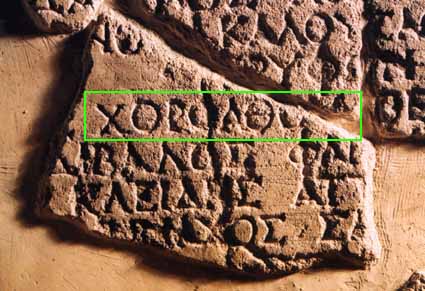
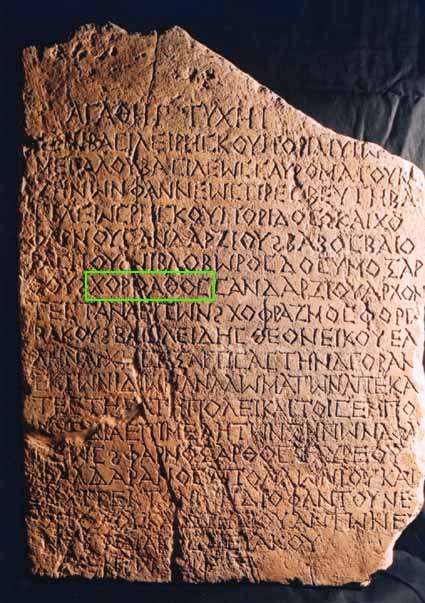
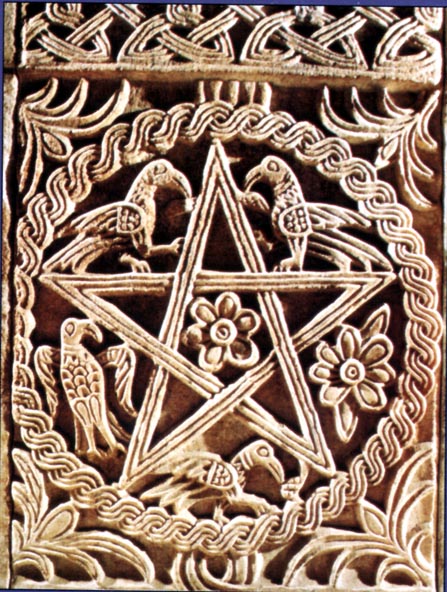 Duke Trpimir
Duke Trpimir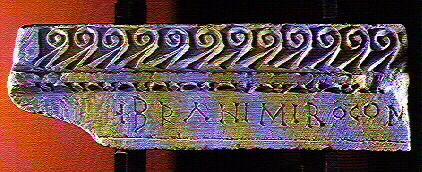 The Croatian duke Branimir
The Croatian duke Branimir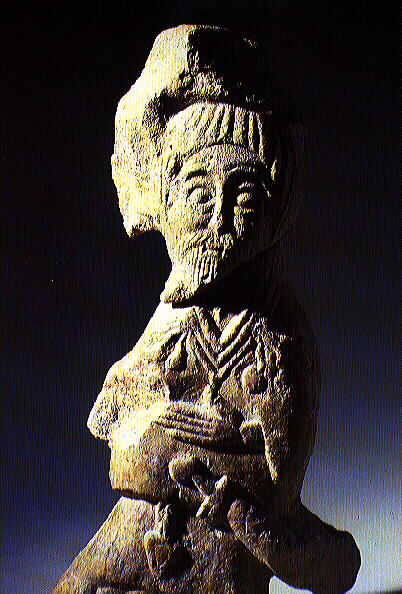 The earliest
The earliest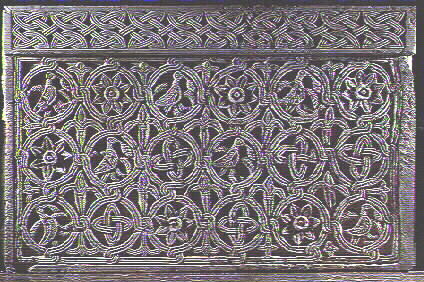
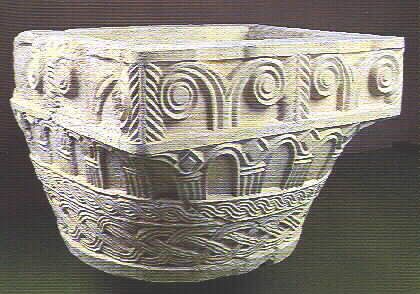 As
As One
One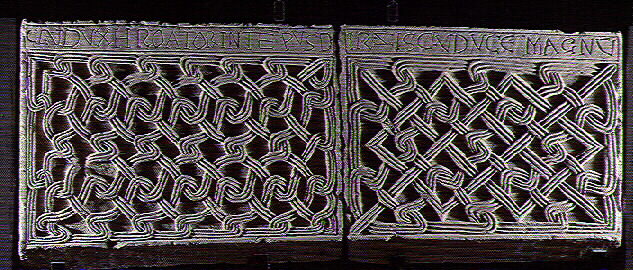 An
An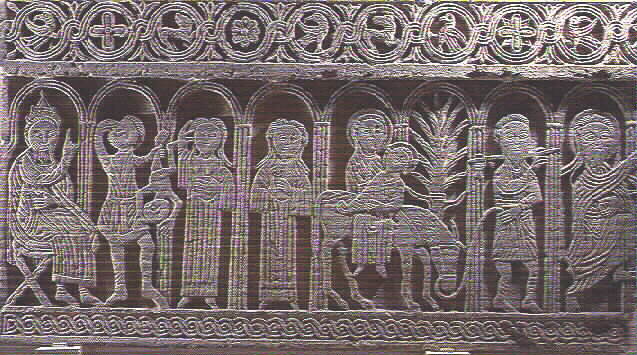
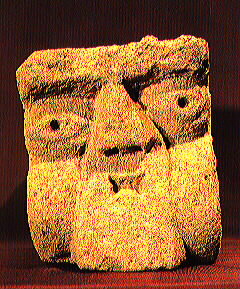 Another
Another